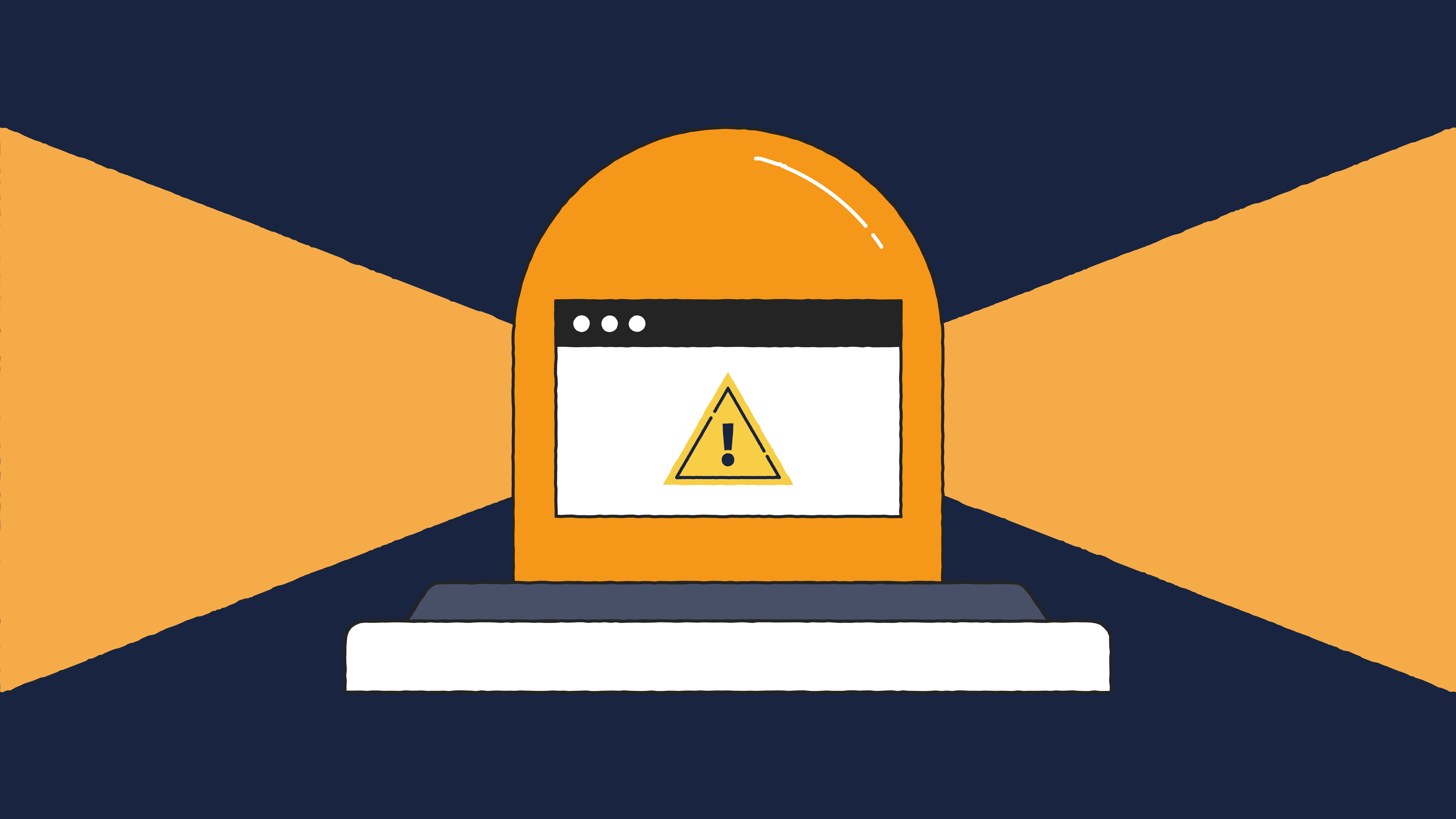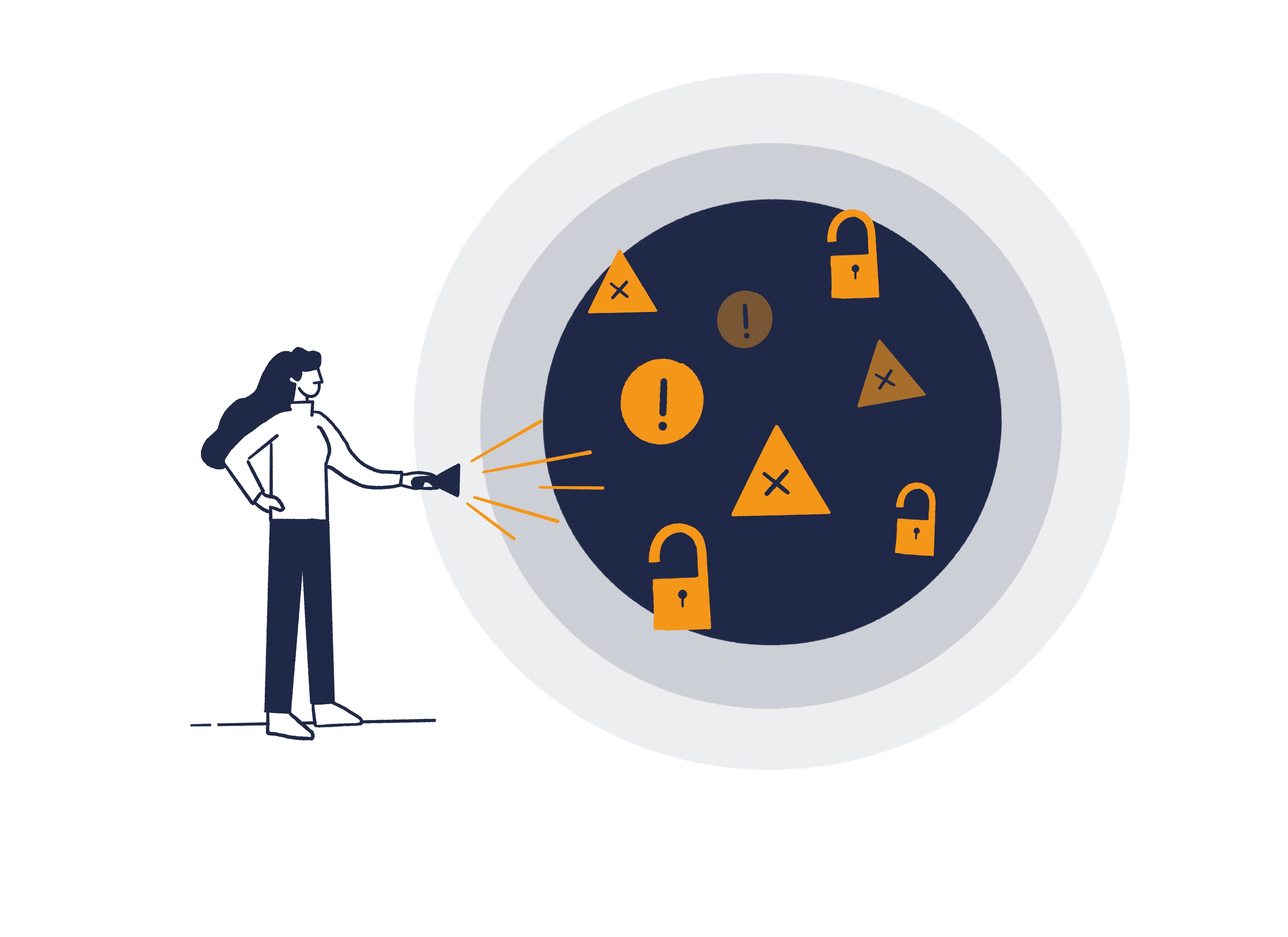Managed Extended Detection and Response (MXDR) or Managed XDR is a security solution that combines traditional detection and response capabilities with advanced automation and a palette of managed services. It integrates multiple security tools into a single platform, allowing for seamless threat monitoring, detection, and response across an organisation’s entire digital environment.
Why does managed XDR matter?
This section offers an overview of the capabilities of managed XDR and shows how extended detection and response (XDR) enhances traditional protection capabilities.
What is included in managed XDR?
Managed XDR is a comprehensive cybersecurity solution that extends the managed detection and response (MDR) framework by incorporating broader visibility across an entire organisation's attack surface. MXDR combines human expertise with cutting-edge digital tools, enabling robust data collection, correlation, continuous threat hunting, monitoring, and incident response offered as a service.
What are the key functionalities of managed XDR? Here is a breakdown:
- End-to-end visibility: Allows monitoring across the entire IT ecosystem, including endpoints and cloud environments.
- 24/7 monitoring: Provides continuous threat detection, investigation, and response.
- Integration across layers: Integrates protection across multiple security layers.
- Automated and human-led responses: Employs automated responses for low-risk threats and human-led interventions for higher-risk scenarios.
How does extended detection and response (XDR) fit into the picture?
Extended Detection and Response (XDR) forms a core component of MXDR, enhancing traditional detection and response capabilities. XDR enables the correlation of security telemetry data across an organisation's entire network, ensuring real-time threat response.
By using artificial intelligence (AI), machine learning (ML), and behavioural analytics, managed XDR identifies and mitigates cyber threats.
What are the attributes of extended detection and response?
- Data correlation: Aggregates and analyses data from various sources to provide a unified view of security alerts.
- Threat hunting and monitoring: Continuous proactive search for potential threats.
- Incident response: Comprehensive incident management, from detection to resolution.
- Automation and machine learning: Uses ML for faster and more accurate threat detection and response.
Managed XDR’s holistic approach makes it a powerful ally in endpoint security threat prevention. To explore how MXDR integrates into existing security frameworks, visit our pages on managed endpoint detection and response and SOC-as-a-service.
What are the benefits of managed XDR?
Enhanced threat detection
MXDR integrates data from multiple sources, including endpoints, cloud environments, and applications, providing a unified approach to threat detection, response, and investigation. This holistic visibility across all potential attack surfaces enables organisations to detect threats more accurately and efficiently.
MXDR employs machine learning techniques to sift through vast amounts of data, identifying potentially malicious activities that might otherwise go unnoticed. By automating the detection process, MXDR reduces the chances of human error and allows security teams to focus on more strategic tasks, enhancing the overall efficacy of threat detection.
Real-time response capabilities
Quick responses are crucial when dealing with cybersecurity threats. They can mitigate damage and prevent further exploitation. MXDR provides continuous threat monitoring and incident response, ensuring that threats are not only detected but also promptly addressed. The combination of human expertise and advanced digital tools allows for a comprehensive and robust defence mechanism.
Integration with security tools
Managed XDR also seamlessly integrates with existing security tools, enhancing their functionality and providing a more cohesive security strategy. Understanding the implementation and advantages of MXDR can significantly elevate an organisation's cybersecurity efforts. By integrating with other security tools, MXDR becomes a central hub for threat detection and response. This enables organisations to identify patterns and anomalies across different systems, providing more comprehensive threat detection.
Implementing managed XDR
Integrating Managed XDR within an existing cybersecurity programme is key for seamless and comprehensive threat management. Managed XDR solutions aggregate data from multiple sources:
- Endpoints: Collecting data from devices like computers and mobile phones.
- Networks: Monitoring traffic within the network.
- Cloud environments: Securing cloud-based applications and data storage.
- Identity solutions: Managing user authentication and access control.
- Applications: Monitoring software for vulnerabilities and threats.
MXDR provides a unified view of security incidents, allowing security professionals to respond promptly and accurately.
Automation capabilities and machine learning
Automation and machine learning (ML) are at the core of MXDR, enhancing threat detection and response capabilities. These technologies analyse vast amounts of data, enabling the rapid identification and mitigation of threats:
|
Technology |
Functionality |
|
Artificial Intelligence (AI) |
Enhances the decision-making process |
|
Machine Learning (ML) |
Automatically identifies threats and adapts to new attack vectors |
|
Behavioural analytics |
Analyses user and entity behaviour to detect anomalies |
Integrating automation and machine learning within an MXDR framework ensures enhanced security efficiency and effectiveness, lowering the risk of cyber threats while improving the return on investment for the organisation.
Which industries are using managed XDR?
While managed XDR can be used across all industries, manufacturing, logistics, financial institutions and healthcare services benefit significantly from the advanced threat detection and neutralisation capabilities.
Managed XDR in manufacturing
The manufacturing sector is an increasingly attractive target for cybercriminals due to its reliance on complex supply chains, legacy systems, and operational technology (OT) that is often not built with security in mind. Unlike traditional IT environments, manufacturing networks blend IT and OT, making them more challenging to secure with standard cybersecurity tools.
This is where MXDR solutions provide a critical advantage. By offering continuous threat detection, rapid response, and expert-led security operations, MXDR ensures that both IT and OT environments remain protected against evolving cyber threats. With advanced threat intelligence, AI-driven analytics, and 24/7 monitoring, MXDR helps manufacturers detect and contain threats before they can disrupt production, cause costly downtime, or lead to regulatory penalties.
Additionally, as ransomware attacks continue to cripple industrial operations, MXDR solutions provide proactive defense mechanisms, such as behavioral anomaly detection and automated incident response, reducing the risk of operational disruption. With compliance requirements tightening in industries like automotive, aerospace, and pharmaceuticals, MXDR also helps manufacturers meet regulatory demands by providing forensic insights and audit-ready reporting.
By integrating MXDR, manufacturers gain not just security, but business continuity and resilience, ensuring that cyber incidents do not compromise production schedules, supply chain integrity, or intellectual property.
Using managed XDR in logistics
The logistics industry relies on real-time data, interconnected systems, and third-party networks to ensure seamless operations. However, this high level of digital integration also makes logistics companies a prime target for cyberattacks, including ransomware, phishing, and supply chain breaches. A single cyber incident can cause shipment delays, financial losses, and reputational damage, making cybersecurity a business-critical priority.
Unlike traditional security solutions, Managed XDR correlates data across endpoints, cloud services, and network traffic to provide a holistic view of potential threats, enabling faster and more precise incident response.
Further, logistics firms often work with multiple partners and third-party providers, increasing the risk of supply chain attacks. Managed XDR strengthens supply chain security by detecting suspicious activity across all touchpoints, ensuring that logistics operations remain resilient and uninterrupted.
With cyber threats evolving and compliance requirements tightening, Managed XDR helps logistics providers meet industry regulations, secure sensitive customer data, and maintain operational continuity.
Financial institutions
Managed XDR is exceptionally valuable for financial institutions where the stakes of cybersecurity breaches are extraordinarily high. Financial organisations benefit from continuous monitoring, threat hunting, and incident response bolstered by advanced analytics and AI.
Financial institutions often deal with sensitive customer data and significant monetary transactions, making them prime targets. By using MXDR, organisations in the finance sector gain a centralised view of their security posture and threat landscape, enabling security teams to quickly identify and investigate potential threats.
Healthcare providers
Healthcare providers rely heavily on managed XDR to secure electronic health records (EHRs), medical devices, and critical systems. With the rising volume of sensitive patient data, there is an increasing need for advanced analytics, proactive threat hunting, and compliance support to safeguard this information and comply with regulations such as HIPAA.
Healthcare providers often operate under stringent standards that demand robust cybersecurity measures. Managed XDR helps them integrate data from multiple sources across their infrastructure and providing a holistic view of the threat landscape.
Conclusion and outlook
Managed extended detection and response (MXDR) is a comprehensive security solution that enhances traditional detection and response capabilities with advanced automation and managed services. By integrating multiple security tools into a central platform, MXDR provides seamless threat monitoring, detection, and response capabilities.
Key attributes of MXDR include end-to-end visibility across the entire IT ecosystem, 24/7 monitoring, integration across multiple security layers, and a blend of automated and human-led responses. Extended Detection and Response (XDR), a core component of MXDR, enhances traditional security measures by correlating telemetry data across an organisation's network. By offering real-time threat detection and response, MXDR not only improves the accuracy and efficiency of threat detection but also minimises response time. Curious to find out more? Visit our MXDR page or get in touch for details!



